Quang Tri, the land of central Vietnam, is known for its tragic historical imprints, clear blue beaches and unique indigenous culture. After merging with Quang Binh from July 1, 2025, this land becomes even more attractive with the combination of war relics and natural woders. This travel guide will help you fully explore Quang Tri: from history, culture, weather, to interesting experiences, culinary specialties and suitable accommodation for your trip.
Overview of Quang Tri Province
Quang Tri, located in the central strip of Vietnam, is known as a land with a strong historical imprint, the place that divided the country during the war with the 17th parallel and Hien Luong bridge. Today, after the administrative merger from July 1, 2025, with Quang Binh, Quang Tri has become a more expanded province, combining both historical depth and natural diversity, from coastal sand dunes, majestic Truong Son mountains, to a system of majestic caves.
The highlight of Quang Tri is the unique intersection: on one side is the cultural space rich in identity of the Van Kieu and Pa Ko ethnic group, on the other side are cool blue beaches such as Cua Viet and Cua Tung, and further away is the world heritage Phong Nha – Ke Bang, now belonging to the new administrative unit. All create a destination that is both nostalgic and new, giving visitors the opportunity to explore both tragic history and nature in just one journey.
With its location on the north-south traffic axis, Quang Tri is present as an important getaway connecting Hue, Da Nang, with the North. This is also an ideal stop on the journey to explore central Vietnam, especially for those who want to learn about the history of the Vietnam War.
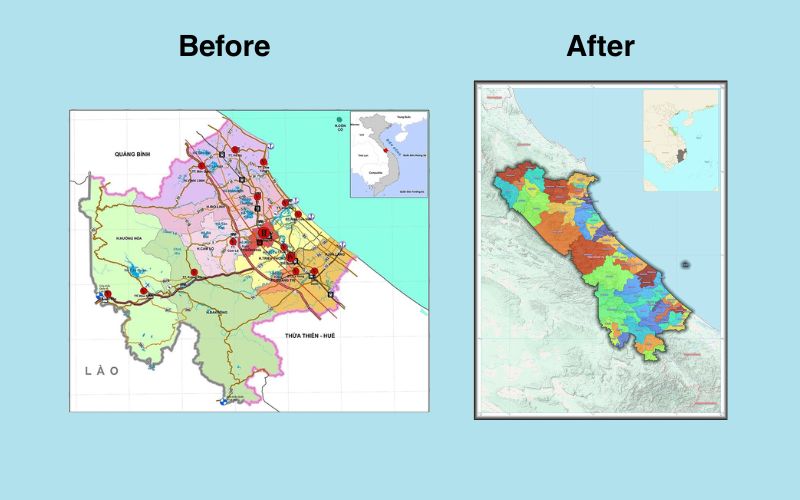
Quang Tri geographical map after merger with Quang Binh
Historical and Cultural Information of Quang Tri
Quang Tri has a close association with the national history, especially in the period of fierce war in the 20th century. This place was once divided by the 17th parallel and the Hien Luong Bridge across the Ben Hai River, a symbol of separation and also a living testament to the journey of national reconciliation after the unification day. When coming to Quang Tri, guests can visit Quang Tri Ancient Citadel, where the fierce 81-day battle took place in 1972, to better understand the brave spirit and great sacrifice of the Vietnamese people.
Not only the battlefield, Quang Tri also preserves a diverse cultural treasure. Ethnic minority communities such as Van Kieu, Pa Ko have lived for a long time in the Truong Son mountain range and still preserve their traditional lifestyle, such as Xap dance, A Rieu Ping festival or rustic folk songs echoing in the mountains and forests. This is a great opportunity for visitors to experience the pristine indigenous cultural space, less commercialized.
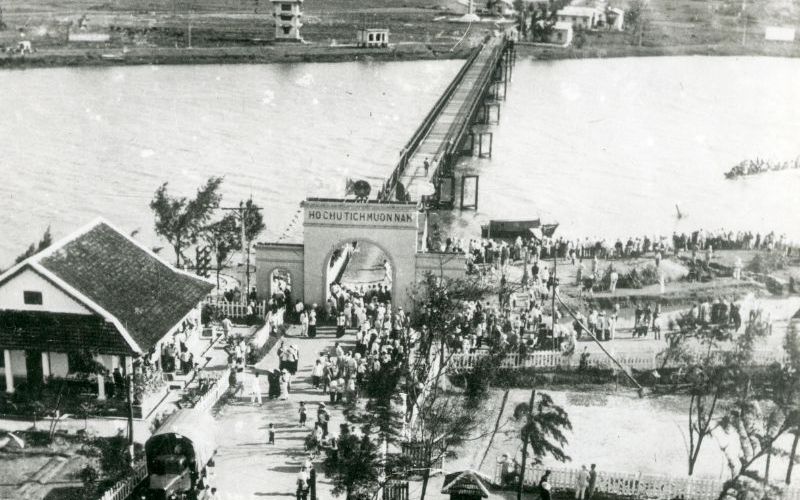
Quang Tri in the past
After merging with Quang Binh (from July 1, 2025), the cultural and historical picture of Quang Tri becomes richer. Tourists can easily combine their journey: morning visit to war relics, afternoon exploring Phong Nha – Ke Bang with majestic caves recognized by UNESCO. The connection between the tragic past and majestic nature helps Quang Tri become a destination not only to “remember” but also “live”, where history and culture blend in every experience.
Quang Tri Weather and Best Time to Visit
Quang Tri belongs to the unique tropical monsoon climate of central Vietnam, with two distinct seasons: dry season and rainy season. The weather here often has both harsh and interesting characteristics, greatly affecting the travel experience.
- Dry season (from March to August): This is the most ideal time to travel to Quang Tri. Lots of sunshine, blue sea, and calm waves are very suitable for outdoor activities such as swimming at Cua Tung, Cua Viet beaches, or trekking in Truong Son Mountain. However, from May to July, the temperature can be quite high (from 35 to 38°C), visitors should prepare hats, sunscreen, and enough drinking water.
- Rainy season (from September to February): Heavy rainfall, sometimes accompanied by storms, can hinder travel. But this is the right time for those who love the quiet atmosphere, want to experience historical tourism, or explore local culture. At the end of the year, many festivals of the Van Kieu and Pa Ko people also take place, bringing unique experiences.
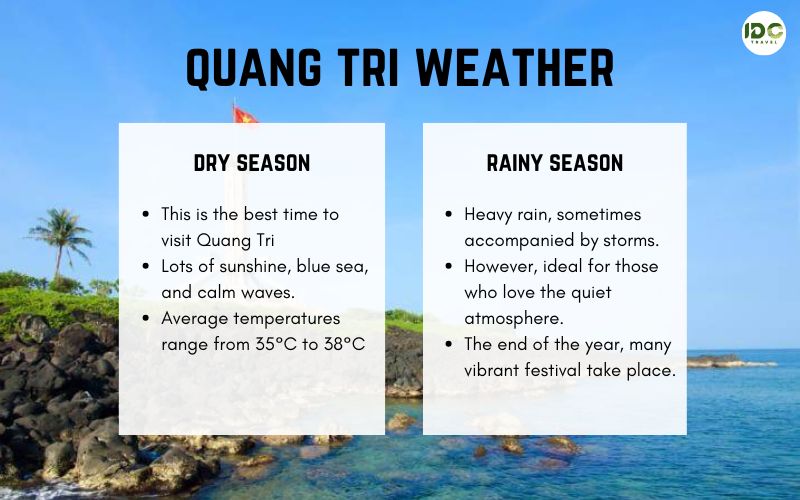
Quang Tri weather
How to Get to Quang Tri
Quang Tri is located on the North-South traffic artery, so getting here is quite convenient. After merging with Quang Binh, visitors have more options thanks to the expanded transport system, especially the airport and train station route.
- By air: There is no commercial airport in Quang Binh, but it is only 100 kilometers away from Dong Hai Airport (Quang Binh) and about 80 km from Phu Bai Airport (Hue). Both of these airports have regular domestic flights from Hanoi and the city. Ho Chi Minh City. From the airport, you can take a taxi, private car hire, or bus to get to the centre of Quang Tri.
- By train: The North-South railway runs through Quang Tri with major stations such as Dong Ha and Quang Tri. This is the favourite choice of many tourists because it is convenient and can see the views along the central. After the merger, Dong Hai Station (Quang Binh) also became an important stop, convenient for tourists who want to combine the journey.
- By bus/private car: Quang Tri is located on National Highway 1A, easily connecting to Hue (about 2 hours by car) and Da Nang (about 3.5 – 4 hours). Sleeper buses from Hanoi or Ho Chi Minh City also frequently stop at Dong Ha. With a private car, the coastal road and Hai Van Pass will be a memorable experience.
- By motorbike: If you are an explorer, the motorbike trip from Hue – Quang Tri – Quang Binh along National Highway 1A or the West branch of Ho Chi Minh Road will bring you a wonderful experience of passing through many beautiful landscapes and ethnic villages.
Small tip: For international tourists, if you fly to Hanoi or Ho Chi Minh City, book a connecting flight to Dong Hoi (Quang Binh) or Hue, then combine your itinerary to visit both provinces in one trip, saving time and diversifying your experience.
Best Things to Do in Quang Tri
Visit Quang Tri Ancient Citadel
Quang Tri Ancient Citadel was built in the early 19th century under the reign of King Gia Long, initially used as a citadel and then as a fortress. During the war, this place became a historical witness to the fierce 81-day and night battle in 1972. Today, the Citadel has been partially restored with many valuable artifacts, images and documents inside. When walking on the campus, you will clearly feel the solemnity through each row of trees, the walls stained with time. In the afternoon, the golden sunlight shining down on the citadel makes the scene even more peaceful, very suitable for a journey of both sightseeing and commemoration.
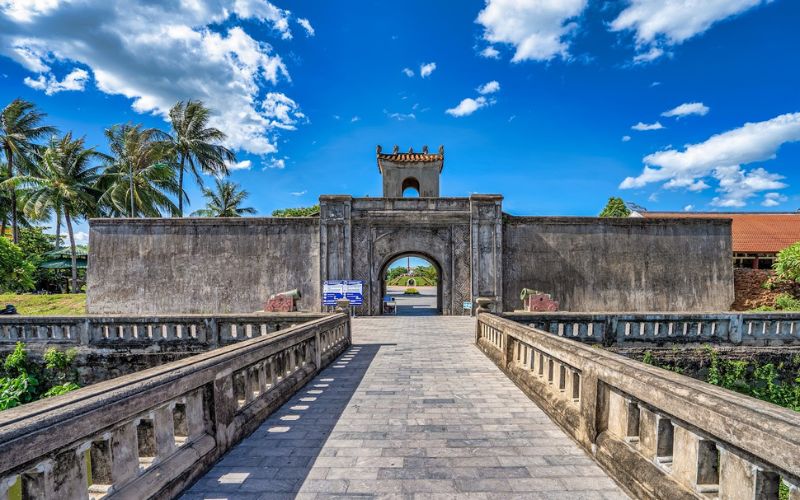
Quang Tri Ancient Citadel
Walk on Hien Luong Bridge – Ben Hai River
Hien Luong Bridge is located on National Highway 1A, spanning the Ben Hai River in Vinh Linh. During the period 1954 – 1975, this was the boundary dividing the country at the 17th parallel. Currently, the bridge is painted in two colors blue, yellow symbolizing the two regions of the South-North in the past. Visitors can stand in the middle of the bridge, listen to historical stories from the tour guide, or simply watch the gentle river flow, a symbol of peace after many years of division. Don’t forget to visit the 17th Parallel exhibition house nearby to better understand the historical context.

Hien Luong Bridge
Explore the pristine Con Co Island
Con Co is a small island located about 30 km from Cua Tung, taking just over 1 hour by speedboat. The island is less than 4 km2 wide but has a rare pristine beauty. Visitors can rent an electric car or bicycle to go around the island, visit Con Co lighthouse, a place to see the panoramic view of the vast sea and sky. In addition, diving to see coral in Con Co is very popular, because the sea water is clear, and the coral is colorful. In the evening, you can enjoy fresh seafood caught by fishermen, especially the snails and blue crabs.
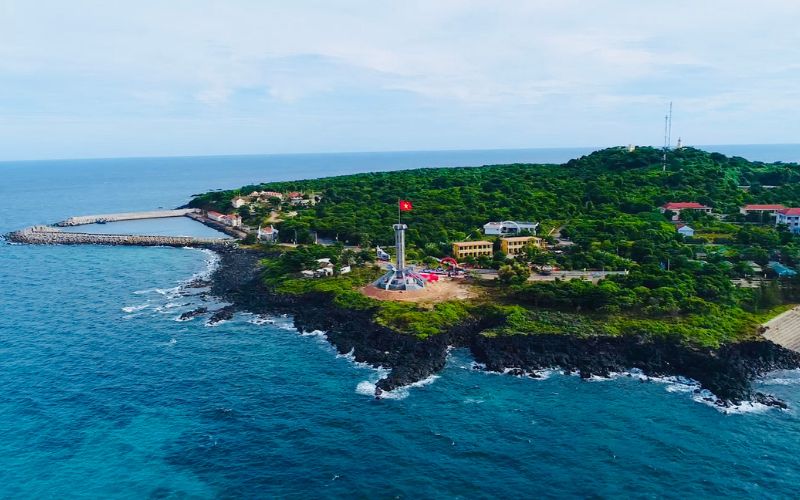
Con Co Island
Visit Truong Son Cemetery
Considered the largest martyrs’ cemetery in Vietnam, there are more than 10,000 graves of soldiers from all over the country. The cemetery is large, divided into many areas according to each province, creating a touching historical picture. Walking along the tree-lined streets, listening to the sound of wind chimes and the scent of incense, you will feel the sacredness and reverence. Many visitors share that this is an experience that leaves them speechless, but also helps them understand more deeply the brave spirit of the Vietnamese people.
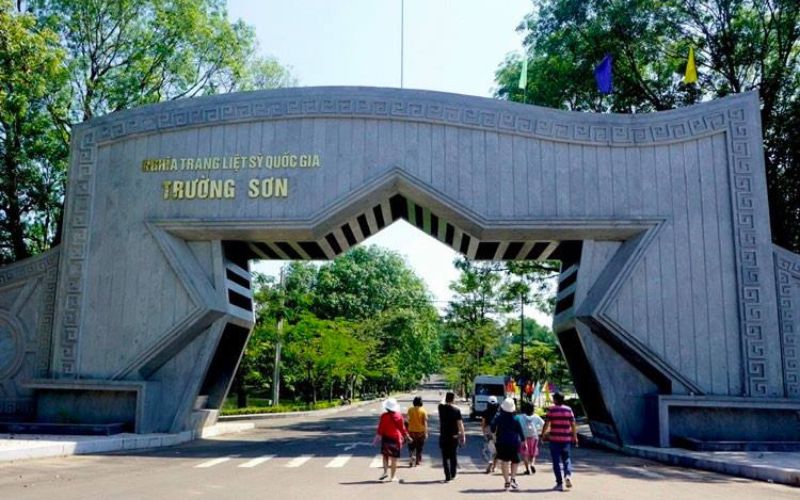
Truong Son Cemetery
Cua Tung & Cua Viet Beach
Cua Tung has long been known as the “queen of central Vietnam beaches”. The sea water is clear, the waves are gentle, very suitable for swimming or walking on the long, smooth white sand. In the summer, the atmosphere here is very bustling, with many seafood restaurants serving specialties such as grilled squid, fresh shrimp steamed with beer. Not far away is Cua Viet beach, famous for its beautiful sunrise view. If you prefer a quieter space, go a little further to find small beaches, which still retain their wild beauty.
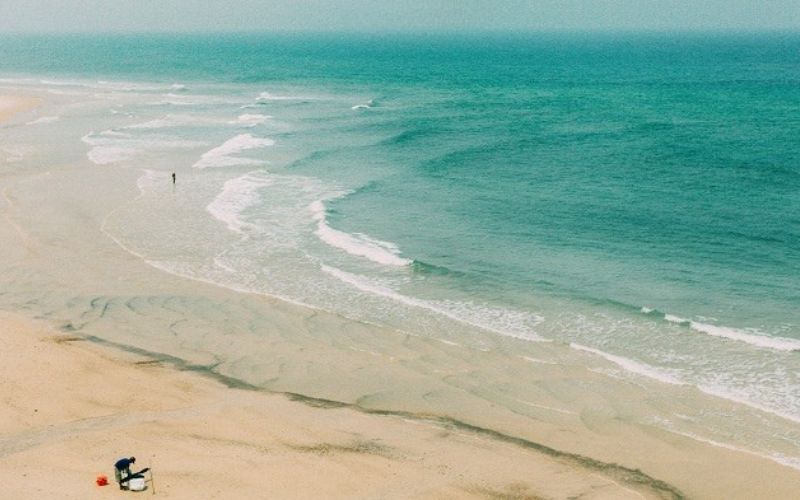
Cua Tung & Cua Viet Beach
Explore Phong Nha – Ke Bang Heritage (after the merger in 2025)
From July 1, 2025, Quang Tri has merged with Quang Binh, creating more favorable conditions for tourists who want to explore both lands on the same trip. It only takes about 2-3 hours to travel from Dong Ha to Phong Nha – Ke Bang, a world natural heritage famous for its system of more than 300 caves. The most prominent features include: Phong Nha Cave with its long underground river, the magnificent Paradise Cave with its multi-shaped stalactites, and Son Doong Cave – the world’s largest cave. This is definitely an experience that will fascinate any adventure and nature explorer.

The fabulous Phong Nha – Ke Bang Heritage
>>> Vietnam is a rich natural heritage country, with numerous world wonders, ideal for those who love to explore hidden charm of nature. If you are into these kind of exploration, please reach out to our Journey Through Wonders of Central Vietnam in 6 Days.
What to Eat in Quang Tri?
Quang Tri cuisine has a strong flavor of central region: spicy, intense and rustic. Many dishes are associated with memories of war, with the lives of people in coastal and mountainous areas, creating a difference compared to neighboring provinces.
Cháo cá Lăng (Catfish porridge)
This is a popular dish in riverside areas, especially the Thach Han River. Catfish is cooked with rice, creating a bowl of sweet, slights fatty porridge. People often add a little herbs, pepper and chili to enhance the flavor. This is a great breakfast dish, especially on cold days.
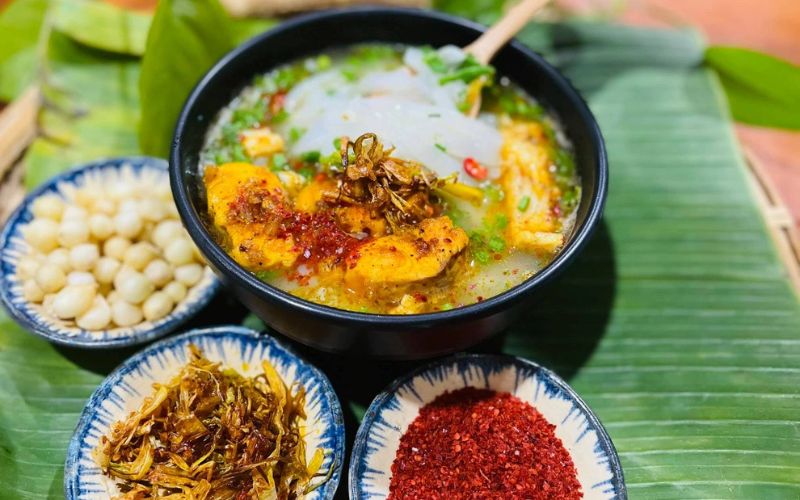
Catfish porridge
Bánh Canh Cá Lóc (Snakehead fish thick noodle soup)
Different from southern noodle soup, the noodle soup here has soft rice noodles, the broth is cooked from bones and snakehead fish, with a natural sweet taste. A hot bowl of noodle soup, with a little green onion and satay, is both filling and full of central flavor.
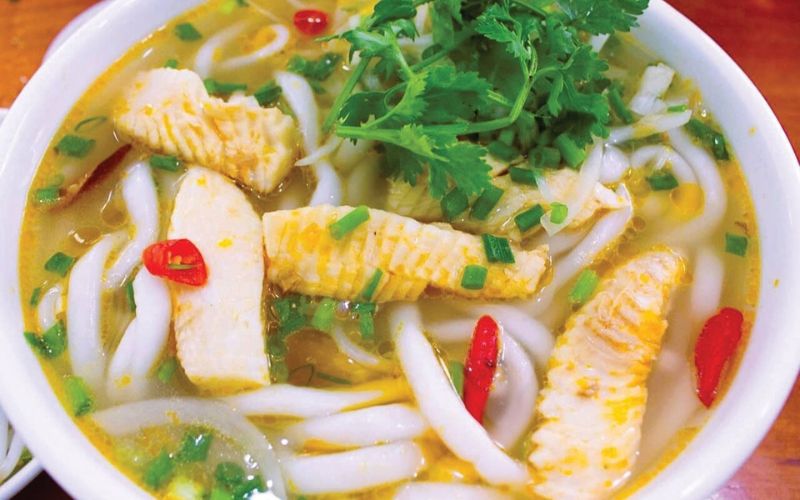
Snakehead fish thick noodle soup
Bún hến Mai Xá (Mai Xa mussel noodle soup)
A famous specialty in Mai Xa village (Gio Linh district), mussel noodle soup has a characteristic spicy taste, Small but sweet mussels are stir-fried with spices, served with rich broth, and fresh vegetable. This is a simple dish that is very popular with locals.
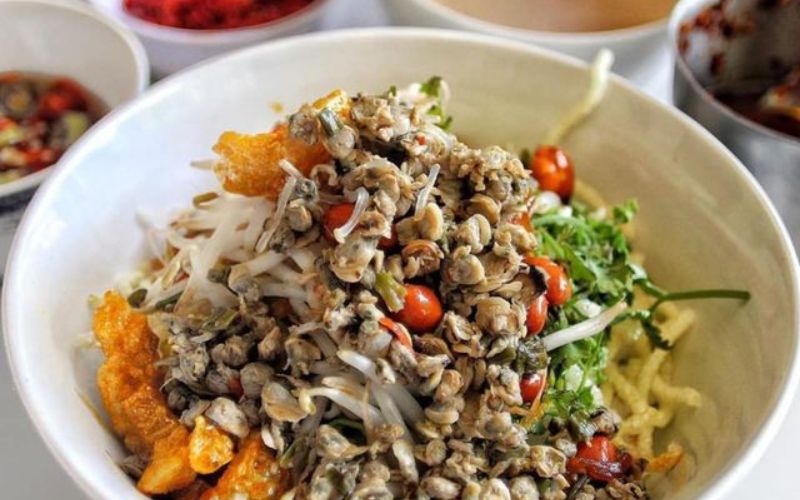
Mai Xa mussel noodle soup
Bánh Ít Lá Gai (Gai Leaf Sticky Rice Cake)
A traditional sweet cake, often served in festivals adn death anniversaries. The crust is made from crushed gai leaves mixed with sticky rice flour, filled with coconut or sweet green beans. When peeling off the small cake, visitors will feel the fragrant, sticky taste mixed with the characteristic aroma of gai leaves.
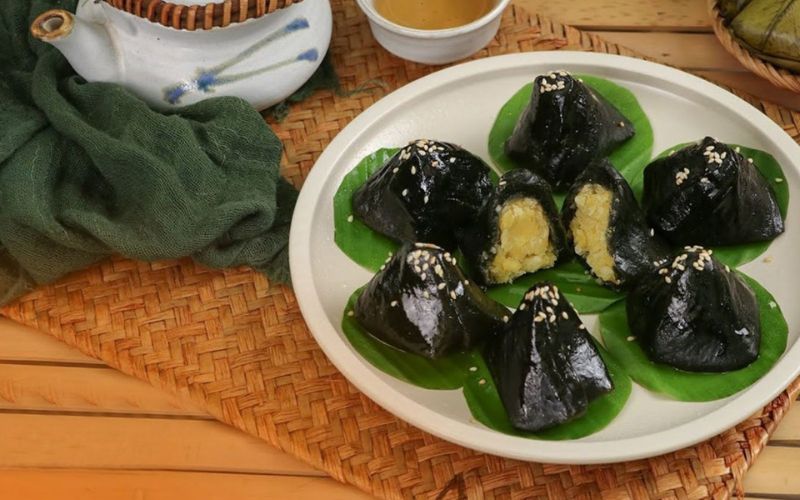
Gai Leaf Sticky Rice Cake
Gỏi Cá Cửa Tùng (Cua Tung fish salad)
Cua Tung fish salad has its own flavor: fresh fish is thinly sliced, marinated with lemon, served with raw vegetables, green banana, sour star fruit and dipped in a broth made from roasted peanuts, sesame and spices. The sweetness of the fish blends with the sourness, astringency, fatty, and spicy flavors. Many tourists tasted this dish and they admitted this was such as unforgettable culinary experience.
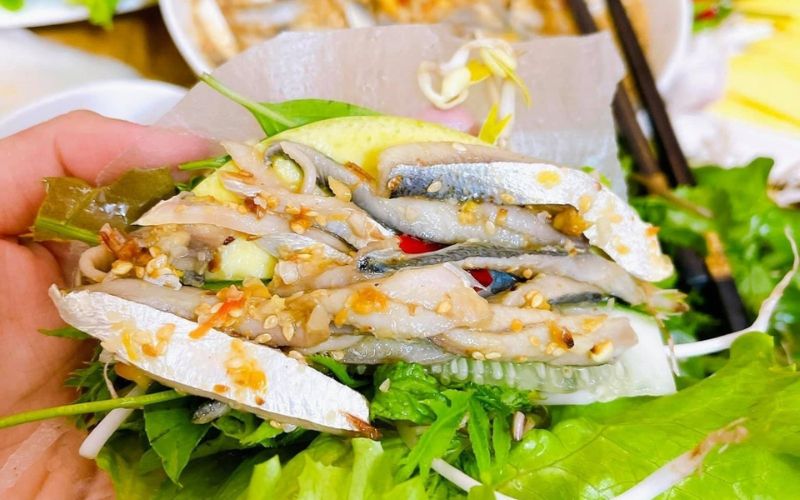
Cua Tung fish salad
Mít Trộn Quảng Trị (Quang Tri mixed jackfruit)
This is a rustic but very typical dish. Young jackfruit is boiled, shredded and mixed with pork belly, herbs, and roasted peanuts. This dish often appears in parties and gatherings and is easy to make visitors remember forever because of its familiar yet strange flavor.
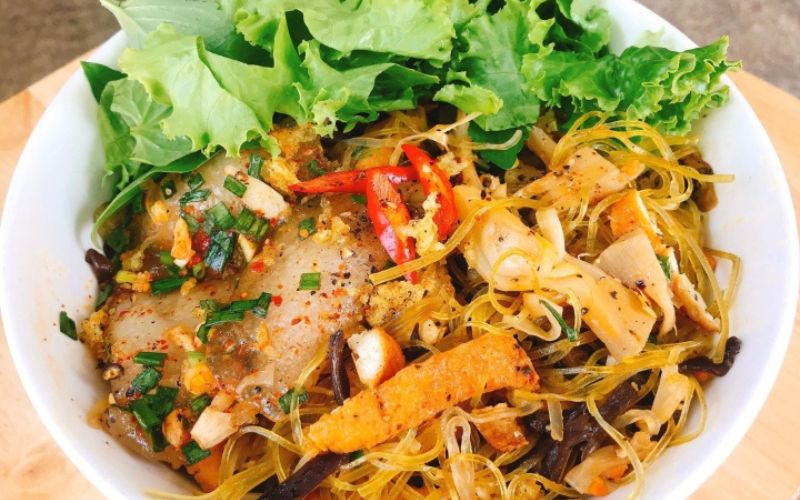
Quang Tri mixed jackfruit
Where to Stay in Quang Tri?
After a long day of historical, cultural and natural exploration, finding a comfortable accommodation is essential. Although Quang Tri has not been a tourism developed province like Da Nang and Hue, there still several options for you to stay at.
Dong Ha Hotel – The central of Quang Tri Province
Dong Ha is the biggest cities in the region and also the administrative – economic center of the province. From there, you can easily travel to attractions such as the Ancient Quang Tri Citadel, Hien Luong Bridge, Truong Son Cemetery. Popular 3-4-star hotels include:
- Saigon – Dong Ha Hotel: 4-star hotel, with swimming pool, restaurant, suitable for both groups and families.
- Muong Thanh Grand Quang Tri Hotel: Located right in the center, modern facilities, stable service, suitable for business travelers combined with tourism.
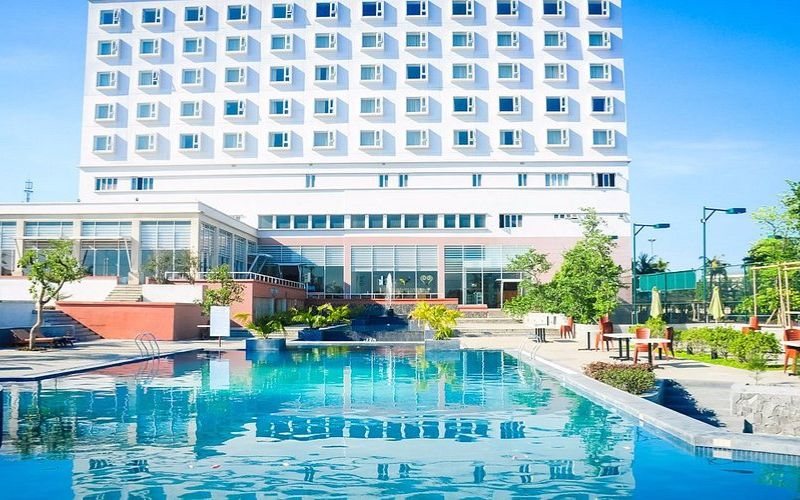
Saigon – Dong Ha Hotel
Coastal Resorts – Relax and Unwind
If you want to enjoy the sea space, then coastal resorts of Cua Tung and Cua Viet are ideal choices.
- Sepon Boutique Resort (Cua Viet): Architecture in harmony with nature, near the beach, suitable for short vacations.
- Cua Tung Resort: Not too luxurious but has a beautiful location, easy to move to Con Co Island.
Homestays & Eco-lodge – Experience local culture
In the mountainous area of Huong Hoa – Da Krong, visitors can choose a homestay to experience the life of the Vna Kieu and Pa Ko ethnic groups. The simple, cozy wooden stilt houses will bring a sense of closeness, accompanied by community activities such as xap dancing, drinking wine, and enjoying local cuisine. This is a suitable experience for those who love sustainable tourism and cultural exploration.
Combine Accommodation in Quang Binh (after the merger in 2025)
From July 1, 2025, when Quang Tri merges with Quang Binh, visitors can combine their journey with famous resorts in Dong Hoi and Phong Nha such as:
- Sun Spa Resort (Dong Hoi): 5-star luxurious coastal resort with a private beach.
- Chay Lap Farmstay (Phong Nha): A popular eco-homestay, near caves and national parks.
Small suggestion: If you like convenience, stay in Dong Ha. If you love the sea, choose Cua Tung – Cua Viet. If you want to be close to nature and local culture, a mountain homestay or farmstay near Phong Nha is the perfect choice.
>>> To explore more beautiful destination in the central part of Vietnam, visit our Central Vietnam Tour 2025/2026. Whether you interested in famous tourist attractions of Da Nang or historical sites in Hue or majestic natural landscapes in Quang Tri, this tour packages caters for all your needs.
In conclusion, Quang Tri is not only a destination that preserves heroic historical memories, but also a land of blue sea, wild mountains and forests and rich indigenous culture. From the Ancient Citadel, Hien Luong Bridge to Con Co Island or Van Kieu and Pa Ko villages, each experience gives visitors a deep insight into the people and land of the central region. After merging with Quang Binh from July 1, 2025, the journey to expore Quang Tri is even more complete when you can combine war relics with the natural wonder of Phong Nha – Ke Bang in just one trip.
If you are looking for a destination to both contemplate history and immerse yourself in unique nature and culture, Quang Tri is definitely an option not to be missed. Contatc us to plan your trip today and let central Vietnam tell your stories that are both tragic and inspiring.